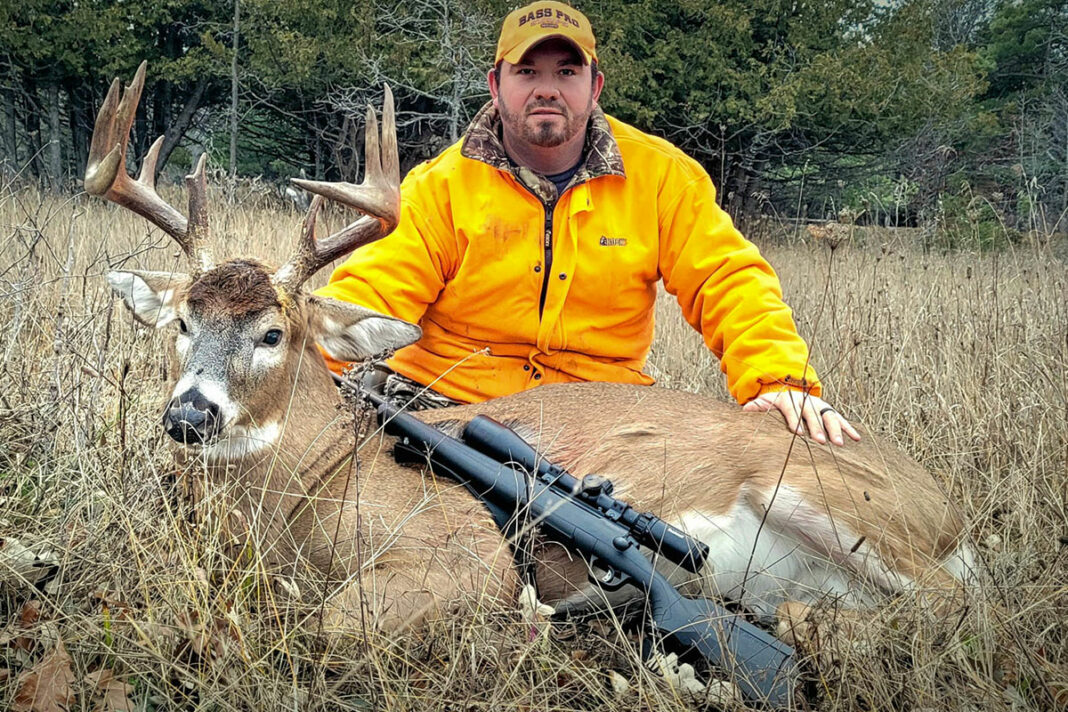ONTARIO—Chronic wasting disease (CWD), which is a fatal and untreatable disease for cervids (including deer) was not detected in Ontario monitoring and surveillance carried out by the Ministry of Natural Resources and Forestry (MNRF) in 2023. However, experts warn the province is far from being in the clear when it comes to CWD and protecting wildlife from this threat, especially when Ontario is surrounded by other provinces and states where the disease has been confirmed.
“For sure, CWD has significant impacts on the deer, wildlife populations where it is present, as well as economic and biodiversity effects as we have seen in other jurisdictions where CWD has been confirmed. In the US jurisdictions where CWD has been confirmed, they have spent as much as eight times more on management than they normally would. Where CWD has been found, there have also been 10-20 percent declines in deer and other cervid populations each year, and hunter participation has been shown to decrease as well,” said Larissa Nituch, science operations supervisor with the MNRF. “The state of Wisconsin, which has lots of deer and lots of confirmed CWD saw a decrease in deer hunter participation after CWD was detected there.”
Mark Ryckman, wildlife biologist and manager of the policy section with the Ontario Federation of Anglers and Hunters (OFAH) said CWD, “is the biggest threat to deer and moose populations in North America.”
Ms. Nituch said CWD is highly contagious and affects the central nervous system of members of cervids, including white-tailed deer, elk, moose and caribou. “We’ve been monitoring CWD in Ontario since 2002, and there has been no evidence that it is in our wildlife, knock on wood,” said Ms. Nituch. It was first discovered in the late 1970s and early 1980s in Colorado. And in the late 1990s and early 2000s it was found in additional states and provinces.”
“CWD has now been detected in 32 US states and five provinces in Canada including British Columbia, Alberta, Saskatchewan, Manitoba and Quebec,” continued Ms. Nituch. “It was confirmed in Quebec in 2018, just on the other side of our (Ontario) border.”
“When it was found a few years ago in Quebec this was by far the closest case to Ontario in a long time,” said Mr. Ryckman. “Manitoba has been dealing with CWD in the southwest corner of the province, and in January CWD was found in a deer in Winkler, Manitoba, a couple of hundred kilometres from Ontario. However, experts are fairly confident that it was not originally from Manitoba; deer cross from North Dakota (which has been dealing with CWD for a few years,) and was also found about 200 kilometers from any other known animal in Manitoba.”
“Obviously, there is no way to prevent a deer or moose from walking across the border into Ontario,” said Mr. Ryckman. “Ontario is lucky that in many parts of the province we have the Great Lakes and the Ottawa River that provide barriers to their getting into Ontario.” However, “There is no such barrier in Northwest Ontario and if cervids have CWD and travel eastward, this could infect our deer and moose populations. This heightens our concerns, but we rely on the competence of the Manitoba government to continue measures to help prevent this from taking place.”
“We use a risk-based model where we do our monitoring to prevent CWD, in the areas we monitor, which includes a number of factors: proximity to neighbouring provinces and states that have CWD, deer density and deer farms,” explained Ms. Nituch. She explained that in 2023, the MNRF focused its monitoring surveillance prevention program on three areas of Ontario, Southwestern Ontario from Sarnia to Brantford; Central West and South Algonquin Park; and the Northwestern area at the border of Minnesota, from Rainy River to Atikokan. Those high-risk areas are then surveilled by crews who visit hunt camps to request samples from harvested deer.
“It’s great news that it wasn’t detected in 2023, but we need to continue to be vigilant,” said Ms. Nituch. “We have a large landscape and need to be focusing our efforts where the risk is highest. But in addition to that annual surveillance, we also test sick or strange-acting members of the cervid family across Ontario at all times of the year.”
Ms. Nituch says Ontario’s CWD plan includes prevention measures for hunters, along with a response plan when and if the disease is detected. The plan includes the best available science and lessons that the province has learned from other areas that have CWD response in place. She pointed out the response plan is based on New York State’s response plan, the only state that has been able to successfully eliminate CWD after it was detected.
“Manitoulin Island has been monitored several times, most recently in 2016 and before that in 2008,” said Ms. Nituch.
“It an interesting disease; the symptoms are progressive, a deer might look normal for a couple of years before it is detected,” said Ms. Nituch. “At the end the deer become emaciated-they lose weight, act differently showing a lack of fear of humans, and eventually they will suffer tremors, they will stumble and be seen drooling. It is a terrible disease.”
“The best defence to keep CWD out of Ontario is preventing it from getting here because once the disease is present, it spreads quickly,” said Ms. Nituch. “In our CWD response and plan natural lures and attractants made from cervids (in areas where there is CWD) are prohibited. We also prohibit high risk animal parts being brought into Ontario from other areas. Hunters can only bring back butchered, deboned, packaged meat. And we strongly encourage hunters to only use baits produced locally in Ontario. There are also controls in place on the transfer of live cervids, as a permit is required. As well, in terms of monitoring, we rely on hunters because the large majority of samples in our surveillance program come through the samples of harvested animals. These samples and the hunters support is critical.”
She explained that, essentially during the hunt season in areas that are being focused on for monitoring surveillance, “our work crews visit area hunts, requesting hunters to provide samples of harvesting deer, we rely on hunters to submit samples, and we also set up freezer depots up in the survey area and request cervid samples from hunters,” continued Ms. Nituch.
For 2024 the MNRF will be carrying out CWD surveillance in southern Ontario from Owen Sound to Orangeville and from Peterborough to Belleville.
“Obviously, we strongly encourage hunters to take part in the CWD surveillance program,” said Mr. Ryckman. “And hunters should report strange acting or looking deer and moose to the MNRF so they can investigate.”
“CWD is definitely a major concern,” added Ms. Nituch. “It’s been found in 32 US states and five provinces in Canada. It surrounds Ontario. Our focus remains on prevention.”
For more information, go online to the MNRF website.





